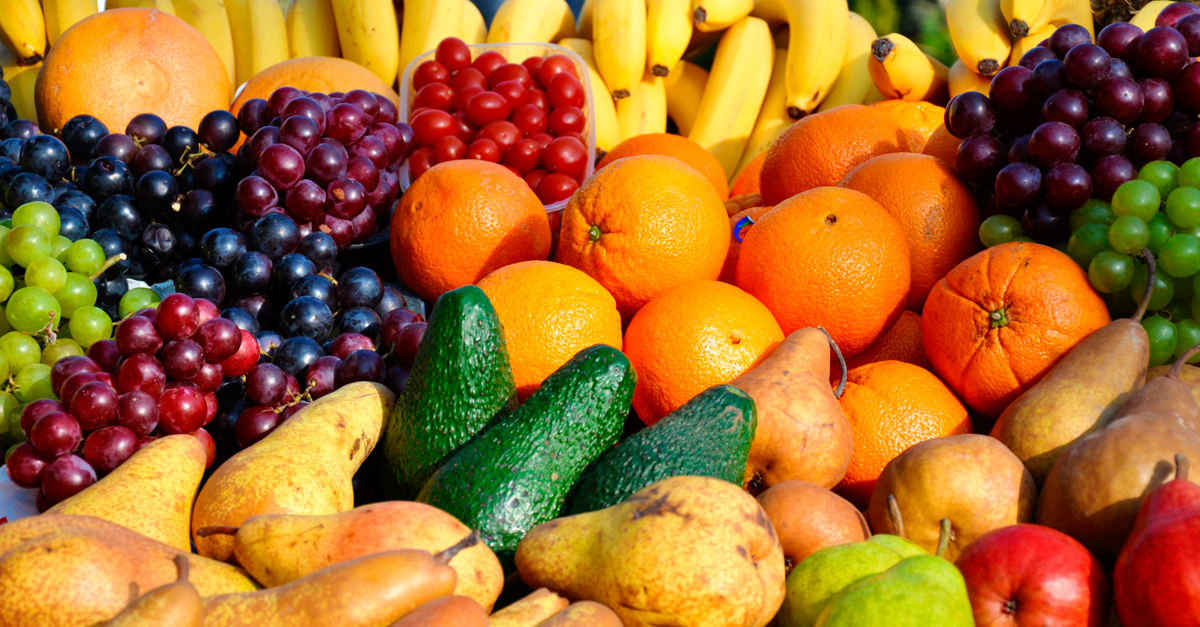Association between food availability and mortality due to colorectal cancer in the Americas
Received:
15 August 2017,
Accepted:
28 June 2018,
Published:
16 October 2018

Abstract
With the aim of describing the association between food availability and the mortality rate due to colorectal cancer in the countries of the Americas in 2010, data provided by the International Agency for Research on Cancer and the Food and Agriculture Federation were analyzed in an ecological study. Great variability was observed except in caloric supply. Food availability was abundant for calories, total fats, animal fat, red meat and alcoholic beverages. Availability was critically low for fruits and vegetables in 80% of the countries. The countries with the highest colorectal cancer mortality rates were Uruguay, Barbados, Argentina and Cuba, while those with the lowest rates were Guatemala, Canada, Mexico and Honduras. The strongest relationships were found between colorectal cancer mortality rate and the availability of animal fat, red meat, alcoholic beverages and calories. No protective effect of availability of fruits and vegetables on the colorectal cancer mortality rate was found. It would be advisable to improve the records of tumor incidence and direct ways of evaluating diet to be analyzed in future studies instead of the data used here.
Keywords: Colorectal Neoplasms, Mortality, Diet, Food Supply, Risk Factor
Categories: Feeding
References
1. Buamden S. Disponibilidad Alimentaria y mortalidad por cáncer colorrectal en la Argentina y en los demás países de América en el año 2010. [Tesis de maestría]. Lanús: Universidad Nacional de Lanús; 2017.
2. Instituto Nacional de Cáncer, Ministerio de Salud de la de la Nación. Boletínes [Internet]. Instituto Nacional de Cáncer; 2011 [citado 15 may 2015]. Disponible en: https://tinyurl.com/ycpspmj8
3. Gualdrini UA, Iummato LE. Cáncer colorrectal en la Argentina: organización, cobertura y calidad de las acciones de prevención y control; Informe final de diciembre de 2011: diagnóstico de situación de la Argentina. Buenos Aires: Instituto Nacional de Cáncer; 2011.
4. Pou SA, Niclis C, Aballay LR, Tumas N, Román MD, Muñoz SE, Becaria Coquet J, Díaz MP. Cáncer y su asociación con patrones alimentarios en Córdoba, Argentina. Nutrición Hospitalaria. 2014;29(3):618-628.
5. World Cancer Research Fund. Continuous update project colorectal cancer 2011 report: food, nutrition, physical activity and the prevention of the colorectal cancer. Washington DC: American Institute for Cancer Research, World Cancer Research Fund; 2011.
6. Agencia Internacional de Investigación sobre el Cáncer, Organización Mundial de la Salud. Comunicado de prensa Nº 240: monografías de la IARC evalúan el consumo de la carne roja y de la carne procesada [Internet]. Lyon: Organización Mundial de la Salud; 2015 [citado 01 ago 2017]. Disponible en: https://tinyurl.com/yctj2ct4
7. Willett W. Nutritional epidemiology. New York: Oxford University Press; 2013.
8. Cabuli SD. Metodologías para calcular el consumo de alimentos de en una población. Revista del Hospital JM Ramos Mejía. 2007;12(3):1-8.
9. Cotier JP, Morón C. Hojas de balance de alimentos. En: Morón C, Zacarías I, De Pablo S. Producción y manejo de datos de composición química de alimentos en nutrición [Internet]. Santiago de Chile: Food and Agriculture Organization; 1997 [citado 01 ago 2017]. Disponible en: https://tinyurl.com/yc87o7uj
10. Food Balance Sheet [Internet]. 2017 [citado 01 ago 2017]. Disponible en: https://tinyurl.com/hubuj39
11. Ferlay J, Soerjomataram I, Ervik M, Dikshit R, Eser S, Mathers C, Rebelo M, Parkin DM, Forman D, Bray F, (eds.). GLOBOCAN 2012: Estimated Cancer Incidence, Mortality and Prevalence Worldwide in 2012 v1.0. Lyon: IARC; 2012.
12. Ferlay J, Soerjomataram I, Ervik M, Dikshit R, Eser S, Mathers C, Rebelo M, Parkin DM, Forman D, Bray F, (eds.). GLOBOCAN 2012: Estimated Cancer Incidence, Mortality and Prevalence worldwide in 2012 [Internet]. Lyon: International Agency for Research on Cancer; 2013 [citado 01 ago 2017]. Disponible en: http://gco.iarc.fr/today/home
13. Dawson Saunders B, Trapp R. Bioestadística médica. México DF: El Manual Moderno; 1997.
14. Organización de las Naciones Unidas para la Alimentación y la Agricultura. El Estado de la inseguridad alimentaria en el mundo 2013: las múltiples dimensiones de la seguridad alimentaria [Internet]. Roma: Food and Agriculture Organization; 2013 [citado 01 ago 2017]. Disponible en: http://www.fao.org/3/a-i3434s.pdf
15. Organización Panamericana de la Salud. Informe sobre la situación regional sobre el alcohol y la salud en las Américas [Internet]. Washington DC: Organización Panamericana de la Salud; 2015 [citado 01 ago 2017]. Disponible en: https://tinyurl.com/ya6bq7uh
16. Bravo Velásquez E. Encendiendo el debate sobre biocombustibles: cultivos energéticos y soberanía alimentaria en América Latina. Buenos Aires: Capital Intelectual; 2007.
17. World Cancer Research Fund. Alimentos, nutrición, actividad física y la prevención del cáncer: una perspectiva mundial [Internet]. Washington DC: World Cancer Research Fund, American Institute for Cancer Research; 2007 [citado 01 ago 2017]. Disponible en: https://tinyurl.com/y8fdfy3k
18. Kinlen LJ. Fat and cancer. British Medical Journal.1983;286(6371):1081-1082.
19. Piñeros M. La iniciativa mundial para el desarrollo de registros de cáncer (GICR): una herramienta para el desarrollo de capacidades en el registro de cáncer [Internet]. Lyon: International Agency for Research on Cancer; 2014 [citado 01 ago 2017]. Disponible en: https://tinyurl.com/y794s5qc
20. Organización Mundial de la Salud. Dieta, nutrientes y enfermedades crónicas (Informe Técnico 916). Ginebra: OMS; 2003.










